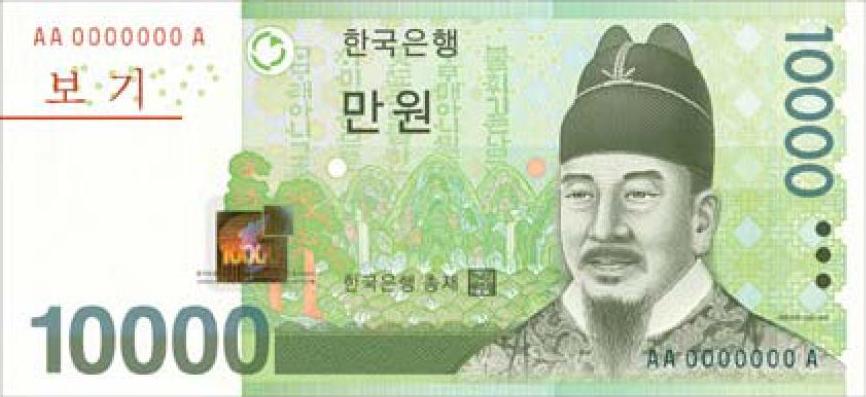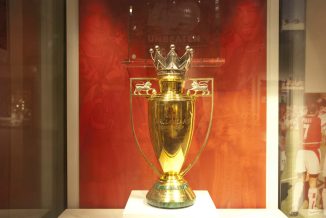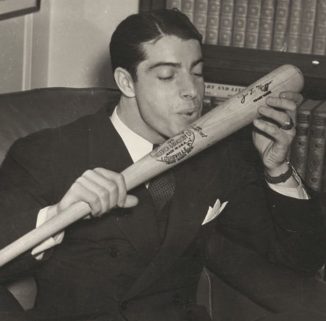627 years ago today, one of the most august figures in East Asian history was born—Sejong the Great—scientist, reformer, and engineer of the Korean alphabet, Hangul. The historic record indicates he had an insatiable appetite for knowledge, and was extremely effective at translating that knowledge into real-world improvements in the welfare of his people, both rich and poor. Among the inventions and products he either commissioned or himself made a reality, there was a new calendar specifically for Korea, a new printing press, medical and agriculture textbooks to be distributed to average people, one of the world’s first rain gauges, hundreds of musical arrangements, some of which are still performed as repertoire today, 100 days’ maternity leave for mothers and 30 days for fathers, and sophisticated gunpowder weaponry. READ about his crowning achievement… (1397)

In 1420, King Sejong’s love for science led him to create an institute within Gyeongbok Palace known as the Hall of Worthies. The institute was responsible for conducting scientific research with the purpose of advancing the country’s technology. The Hall of Worthies was meant to be a collection of Joseon’s best and brightest thinkers, with the government offering grants and scholarships to encourage young scholars to attend.
King Sejong profoundly affected Korea’s history with the creation and introduction of hangul, the native phonetic writing system for the Korean language. Before the creation of the new letters, people in the country primarily wrote using Classical Chinese alongside phonetic writing systems based on Chinese script that predated Hangul by hundreds of years.
However, due to the fundamental differences between the Korean and Chinese languages, and the large number of characters that needed to be studied, the lower classes, who often lacked the privilege of education, had much difficulty in learning how to write. To assuage this problem, King Sejong created this unique alphabet (which numbered 28 letters at its introduction, of which four have become obsolete) to promote literacy among the common people.
Scholars have pointed out that while the human species has created thousands of languages, alphabets are so few in number by comparison as to appear almost like statistical irregularities. With Hangul, Sejong allowed his people to grow rapidly in individuality in a region nevertheless dominated by Chinese influences in every direction.
MORE Good News on this Day:
- Susan B. Anthony and Elizabeth Cady Stanton formed the National Woman Suffrage Association in New York City to campaign for a constitutional amendment to grant a woman’s right to vote (1869)
- Nylon stockings, the new synthetic hosiery was first sold to the public, after debuting in a glitzy display at the New York World’s Fair—and by the time the product hit store shelves demand was so high that women bought all four million pairs in four days (1940)
- Bob Dylan’s single Subterranean Homesick Blues peaked at No.39 in the US charts, giving Dylan his first US top 40 hit– a song John Lennon was reported to find so captivating that he didn’t know how he’d be able to write a song that could compete with it (1965)
- Edith Cresson became France’s first female prime minister (1991)
- California became the second U.S. state (after Massachusetts) to legalize same-sex marriage after the state’s own Supreme Court rules a previous ban unconstitutional (2008)
- Jessica Watson became at 16, the youngest person to sail, non-stop and unassisted around the world solo (2010)

And, on this day in 1928, Mickey Mouse made his debut, appearing with Minnie Mouse in the animated short, Plane Crazy. The squeaky-voiced character created by Walt Disney and Ub Iwerks was dressed in red shorts, large yellow shoes, and white gloves. Mickey Mouse is now one of the world’s most recognizable characters, having appeared in over 130 (mostly short, but some feature) films—including Fantasia—and many cartoons.
119 years ago today, Las Vegas was officially founded as a city, when 110 acres were auctioned to ready buyers, and later became downtown.

With the revenue coming down both railways that intersected there, the area of Las Vegas was quickly growing. At that time, several parts of the valley contained artesian wells—which is why it was named Las Vegas, “the meadows,” in Spanish.
As a stopover on the rail line between Los Angeles and Salt Lake City, urbanization took off in 1931 when work started on the Boulder Dam (now the Hoover Dam), bringing a huge influx of young male workers, for whom theaters and casinos were built. Electricity from the dam also enabled the building of many new hotels along the Strip. (1905)

Happy 54th Birthday to Emmitt Smith, the NFL running back who became Football’s all-time leading rusher during his 15-year career—and later bested opponents on the third season of Dancing with the Stars. Known for his 13 years with the Dallas Cowboys (and two final seasons with the Cardinals), the Pensacola, Florida native retired in 2004 with a record 18,355 rushing yards, eight Pro Bowl appearances, and three Super Bowl Championship rings.WATCH his NFL career highlights… (1969)
83 years ago today, baseball’s Joe DiMaggio began his historic 56-game hitting streak—getting at least one hit in the next 56 consecutive games—a Major League record that still stands today and has been described as unbreakable.
During the streak, which ended on July 17, ‘Joltin’ Joe’ hit .408 with 15 home runs and 55 runs batted in—and struck out only five times. The closest anyone has come to equaling the 27-year-old’s feat is Pete Rose in 1978, with hits in 44 straight games. Experts consider DiMaggio’s streak to be uniquely outstanding and a statistical near-impossibility.
The Yankees went on to win the World Series that year (and 9 more with DiMaggio on their team), but just as important, the 2-month streak served as a distraction from World War II, which was raging in Europe. It “gave America just what it needed: something apart from woe and war to talk about—a summer craze.”
The iconic photo above shows Joe, the son of an Italian immigrant fisherman, kissing his bat following the end of his famous streak. WATCH an awesome video tribute… (1941)
20 years ago today, “The Invincibles” Arsenal FC beat Leicester City 2-1 in the final game of the 2003-2004 English Premier League season to finish as the first side in the highest level of the English game to go unbeaten through an entire season since Preston North End in 1888-1889. There’s so much that can be said about their achievement, but perhaps it’s enough to say that after more than a decade of foreign government-owned football clubs like Chelsea and Manchester City splashing eye-watering sums of cash on players, Arsenal FC have something at their home stadium that none of them have managed to win yet, the Premier League trophy, but one made of gold, not from silver.

The engineer of their success was Arsene Wenger, a French head coach who was the first manager to regularly bring high-profile continental players to the English league, and who developed a graceful attacking style mixed with midfield grit and dynamism. During what was just his third season, Invincibles goal-machine Thierry Henry scored his 120th goal for Arsenal. Patrick Viera, the captain and center-midfielder was inducted into the Premier League Hall of Fame this year for his achievements with Arsenal, and is remembered for doing everything with irresistible power—shooting, tackling, carrying the ball, and leading.
The season ended with 26 wins 12 draws, and no defeats, which included comeback wins against Liverpool, Chelsea, Tottenham, and Middlesbrough, who took a 3-1 lead only for the Gunners to come roaring back 5-3 at full-time, and Leicester City on the final day. WATCH the memories of the glory of glories… (2004)
SHARE the Milestones, Memories, and Music…




















